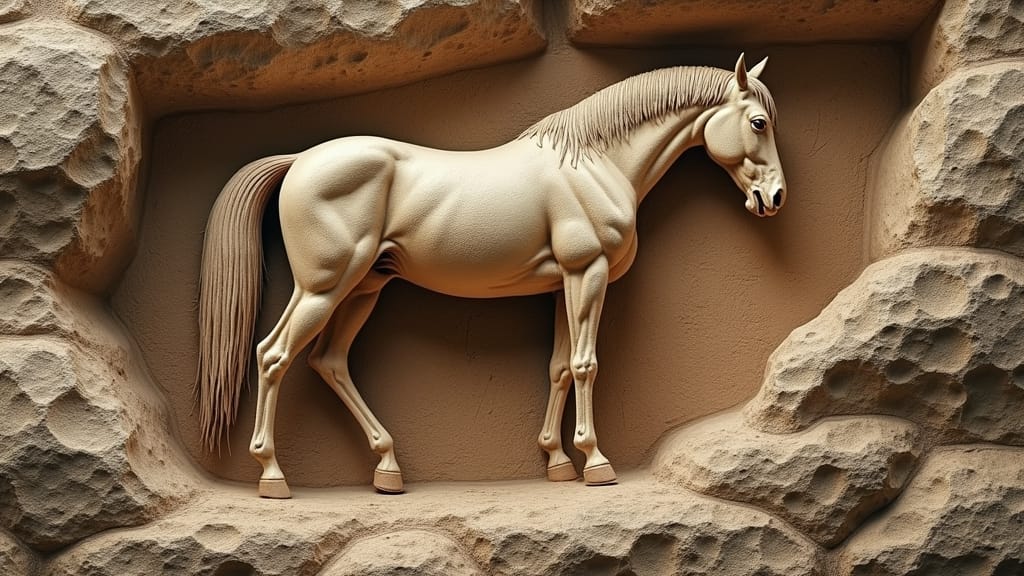Horses captured the imagination and earned a vital role in ancient societies. Their strength and speed provided early civilizations with breakthroughs in transportation, agriculture, and warfare. I dig into how these magnificent animals impacted daily life and shaped history in surprising ways.

Horses as Essential Partners in Early Societies
The domestication of horses brought transformative changes across empires and cultures. Horses provided not only the physical power to pull heavy loads and work in the fields but also a boost in military tactics. Ancient communities saw horses as more than animals. They were partners who could extend the capabilities of entire armies and support the building of vast trade networks.
Historians have noted that the rise of equestrian cultures contributed to faster communication and a greater exchange of ideas between distant regions. Through their use in transportation, horses helped open the door to economic growth and cultural exchange. I find it fascinating that what started as a simple working animal turned into a symbol of progress in many parts of the world.
The use of horses in ancient times was not limited to physical labor. They often held ceremonial value as well. In many civilizations, horses were featured in religious rituals and artistic depictions, signifying power, freedom, and prestige. The blend of practical and symbolic functions made horses invaluable to nearly every society that managed to harness their potential.
The Rise of Equine Domestication
Early settlers discovered that taming horses could lead to a more productive lifestyle. Research suggests that horse domestication occurred over several centuries, involving gradual improvements in breeding and training techniques. I examine how these practices evolved and the growing importance of horses in daily activities.
Initial interactions between humans and wild horses required patience and understanding. Communities learned that horses could be selectively bred to pump up traits such as endurance and agility. These early breeders became experts in understanding the behavior of horses, paving the way for specialized training methods that improved collaboration between man and beast over time.
Ancient texts and artifacts indicate that horses were reared for multiple purposes. They were bred to plow rich soils in the fields, serve as mounts in battle, and even act as a part of complex trade systems. The knowledge passed on through generations regarding horse care and training formed the backbone of many successful ancient armies. This, in turn, led to significant shifts in the balance of power among early civilizations.
Key Phases in the Adventure of Equine Contribution
The evolving role of horses is marked by pivotal moments in history. Their impact is seen across a broad range of fields. Below are several phases that illustrate how horses advanced ancient societies:
- Domestication and Early Use: Early domestication led to improved agricultural practices and allowed for the creation of farming communities that could produce surpluses.
- Military Innovations: Horses revolutionized combat by enabling new tactics in warfare. Their speed and agility allowed for rapid movement on the battlefield and gave armies a competitive edge.
- Trade and Communication: With horses, long-distance travel became practical. This led to a more connected network of trade routes and the exchange of goods, ideas, and cultural practices.
- Symbol of Power: In many cultures, the horse came to represent nobility and strength. This symbolic importance reinforced the status of the ruling class. Ceremonies and rituals surrounding leadership were elevated by the presence of these majestic animals.
- Cultural Integration: The influence of horses extended to the arts, mythology, and literature, embedding them as a recurring motif in ancient narratives.
The progress from early domestication to advanced applications in warfare and trade highlights the lasting impact of horses. Their continued relevance speaks to a partnership that ancient people were able to refine over time.
Challenges and Considerations in Using Horses in Antiquity
Despite their many benefits, relying on horses also came with challenges. Ancient societies faced issues related to the care, training, and deployment of these animals. I believe that understanding these challenges can provide deeper insight into the ingenuity and resolve of early civilizations.
- Health and Maintenance: Regular care was essential to keep horses fit for work. Communities had to develop methods to ensure proper feeding, grooming, and medical treatments with the limited resources available at that time.
- Warfare Hazards: In battle, horses were both assets and liabilities. Their involvement in warfare required specialized tactics, as they could be very vulnerable to injuries which in turn affected the outcome of conflicts.
- Resource Allocation: Maintaining a stable of horses demanded significant resources. The production of fodder, the availability of water, and the need for secure shelter were considerable challenges to overcome.
- Cultural Expectations: In societies where horses were revered, failing to care for them properly could lead to social backlash. Leaders and warriors were expected to maintain their mounts as a mark of honor and competence.
Maintenance and Care in Ancient Settings
The routine upkeep of horses was a practical necessity. Ancient texts recommend regular grooming and the use of herbs believed to improve a horse’s health. Simple items such as brushes and primitive veterinary knowledge played a key role in ensuring that a horse could serve reliably over time. Farmers and military leaders alike developed schedules to keep their horses in optimum condition, fully aware that the health of their equine partners had a direct impact on performance.
Warfare Tactics and the Use of Horses
Horses changed the tactics of ancient warfare. Before their introduction, foot soldiers had limited mobility compared to mounted units. The faster movement of horseback riders allowed for surprise attacks and rapid retreats, altering the dynamics of battle. Ancient military strategists designed formations that incorporated the speed of horses, relying on agile units to outmaneuver opponents.
Yet, the use of horses in battle demanded rigorous training. Soldiers learned to command their mounts through various drills designed to maximize speed and responsiveness. The integration of horses into military operations was a gradual process that required both innovation and adaptation from traditional military structures.
Cultural Significance and Symbolism
Beyond their practical uses, horses held a place of high esteem in art and mythology. Their image frequently appeared in pottery, sculptures, and murals, symbolizing vigor and freedom. Such cultural representations made horses a central part of the identity of many ancient civilizations. I appreciate how these depictions not only honored the animal itself but also celebrated the human spirit that worked together with nature to harness such power.
The reverence for horses was reinforced by their association with the divine in some cultures. Sacred rituals often featured horses as integral components, and their appearance in folklore served as a reminder of the close bond between man and nature. This dual role as both a practical tool and a cultural icon ensured that horses continued to hold a meaningful place in the social fabric of ancient civilizations.
These historical challenges and cultural prominences illustrate that managing horses was a complex task. However, through careful planning and ingenuity, early societies succeeded in tapping into the strengths of these animals while easing up on some of the inherent difficulties.
Evolving Roles and Lasting Impressions of Horses
Long after their initial domestication, horses continued to influence society in evolving ways. Advances in breeding techniques and new methods for training horses helped these animals adapt to changing roles. I find it interesting to review how the animal’s function switched up with the progress of civilizations.
As road and trade networks expanded, horses became central to long-distance communication. Their speed and endurance allowed messages to traverse vast distances quickly, a critical factor in maintaining large empires. This reliability led to the development of specialized messenger systems that relied on horses as the primary means of rapid communication.
In times of peace, horses provided the backbone of trade. Caravans of horse-drawn chariots connected markets and fostered the exchange of goods. The consistent use of horses in these scenarios contributed to a thriving economy, demonstrating the animals’ versatility. Even in later periods, when other modes of transportation emerged, the legacy of the horse endured as a symbol of progress and connection.
The influence of horses extends into cultural memory. Historical records and archaeological finds continue to remind us of the pivotal role these animals played. Ceremonial artifacts, jewelry featuring equestrian motifs, and restored ancient stables all serve as testaments to a time when horses were more than just tools. They embodied the spirit of innovation and endurance.
Basic Roles of Horses in Daily Ancient Life
The significance of horses was most apparent in everyday routines. Their impact was felt in various aspects of daily life, and their roles can be summarized in a few core areas:
- Agricultural Work: Horses were used to pull plows and carts, making it easier for communities to manage large farming operations. Their strength allowed farmers to work more land in less time, which contributed to increased food production.
- Transportation and Trade: These animals facilitated the movement of goods and people. Their speed reduced travel time across rugged terrain, linking remote areas to thriving urban centers.
- Warfare and Security: The presence of mounted units provided a very important strategic advantage, protecting borders and ensuring swift responses to enemy threats.
- Ceremonial Uses: Horses were often featured in rituals and social events. They symbolized prestige, and owning a well-bred horse was seen as a mark of prosperity and status.
The diverse roles played by horses illustrate their importance to ancient communities. They not only improved day-to-day efficiency but also left a mark on the cultural identity of civilizations.
Frequently Asked Questions
Many questions arise when tracking down the role of horses in ancient civilizations. I address some of the common inquiries below to provide clarity.
Question: How did the domestication of horses change ancient societies?
Answer: The domestication of horses revolutionized transport, warfare, and agriculture. Their strength and speed allowed for quicker travel, efficient farming practices, and improved military strategies, which together boosted societal development.
Question: What challenges did ancient civilizations face when using horses?
Answer: Maintaining horse health required dedicated care and resources. Additionally, integrating horses into both defensive and offensive military strategies presented tactical challenges. Management of resources for feeding and shelter was also a critical concern.
Question: Why are horses prominently featured in ancient art and mythology?
Answer: Horses symbolize strength, freedom, and prestige. Their depiction in art and myth reflects their high value in cultural and ceremonial practices. This not only reinforced the social fabric but also celebrated the close bond between humans and animals in ancient times.
Wrapping Up
The story of horses in ancient civilizations is one of innovation, adaptation, and lasting impact. Their role went beyond simple labor. Horses provided the means to revolutionize society in agriculture, warfare, and trade, while also holding deep cultural and symbolic meaning.
Every society that learned to harness the capabilities of horses benefited from improved economic conditions and stronger defense mechanisms. Over centuries, the bond between humans and horses developed into a legacy of endurance and strength that persists in historical records and cultural traditions. I hope that by looking at the multiple layers of this relationship, readers gain a richer understanding of how horses helped shape the world.
The influence of horses throughout history reminds us that innovation can arise from understanding and working with nature. As early civilizations discovered, working alongside powerful partners like horses offered a path to progress and prosperity. This narrative remains a fascinating chapter in our shared history and continues to inspire modern approaches to animal care and transportation.
Furthermore, if one looks into the profound role of horses in ancient creative expressions, one can trace their influence on the development of poetry, literature, and early scientific observations of nature. Rural communities, with their close ties to the land, treasured horses as an essential part of their heritage. Many old narratives, songs, and epic tales openly celebrate the grace and bond between a rider and their steadfast companion. Modern historians and enthusiasts continue to pick up on these traditions, using insights drawn from ancient practices to appreciate how the past subtly shapes our contemporary view of animals.
In addition to their physical and tactical contributions, horses served as cultural bridges between various societies. They allowed communities to connect through dynamic interactions that built empathy and respect for different customs. This cross-cultural exchange spurred not only economic growth but also laid the groundwork for enduring friendships and intellectual advancements across distant peoples. Explorers and storytellers have often cited horses as a source of inspiration that helped shape a rich tapestry of communal life. Their timeless legacy is etched into world history, reminding us to honor the enduring relationship between humans and nature while continuing to learn from the wisdom of the past.
Horses in ancient civilizations on Amazon



